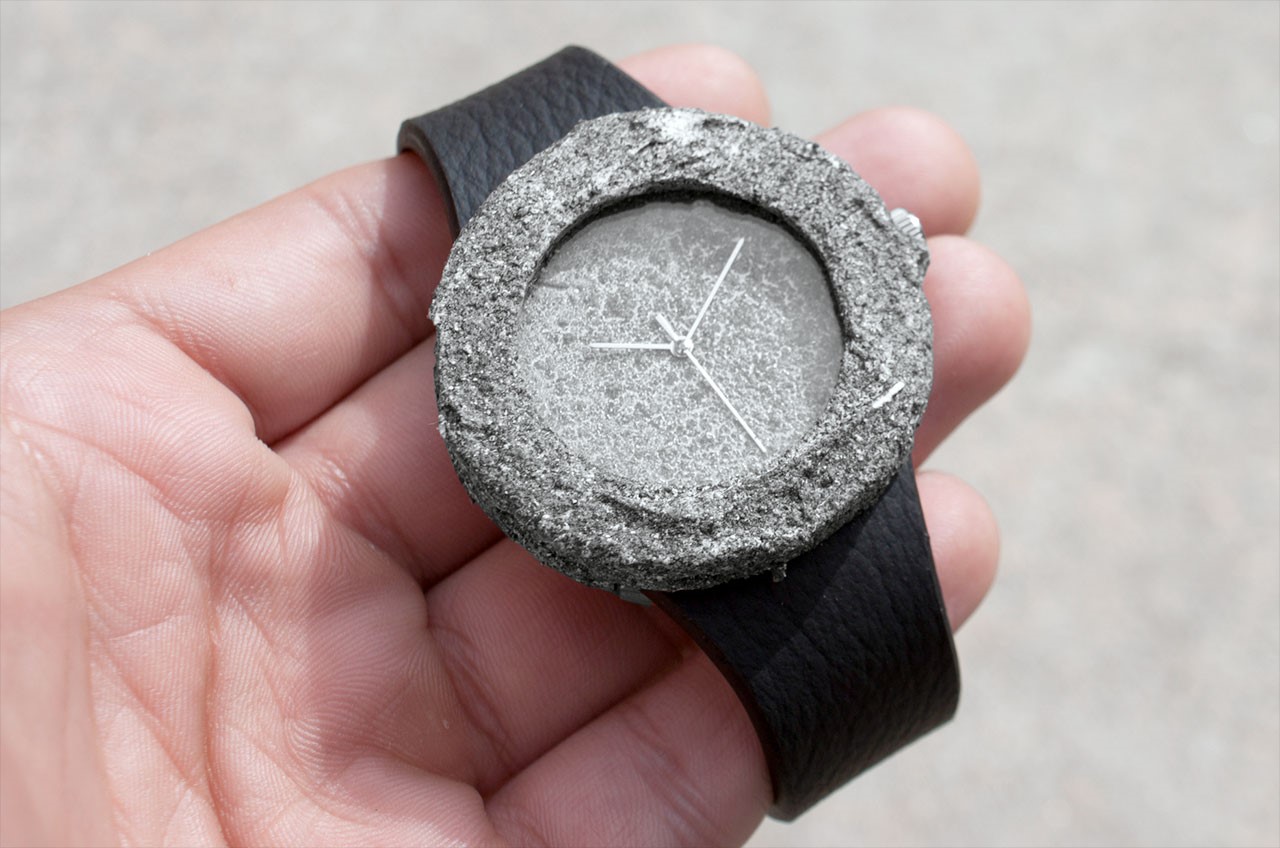Luna-tic-Tock: Facts and Fools Behind Moon Rock Watch

"Own a Sizeable Chunk of the Moon with This Lunar Watch."
That was Gizmodo's headline Thursday morning (Mar. 31), leading to an article about Analog Watch Co.'s new Lunar Watch, "made of a solid piece of genuine moon rock."
And it is not just any old lunar meteorite, either; this moon rock was returned to Earth by the Russians. [50 Years Ago: First Close-Up Photo of Moon's Surface (Video)]
"What justifies [Analog's Lunar Watch] $27,500 price tag is a housing made from a solid piece of 4.5-billion-year-old moon rock collected from our lunar neighbor back in 1974 by the Soviet's Luna probe," described the Gawker design and technology blog, citing the Philadelphia watchmaker's website.
Limited to 25 watches, a high profile article like Gizmodo's could easily lead to the Analog Lunar Watch quickly selling out, were it not for one small problem: the offer was more lunatic than lunar-tock.
"Update: We Got Fooled," Gizmodo added to its headline just 16 minutes after the story was published. "This watch is totally fake."
April Fools
"It is, in fact, a joke," wrote Scott Hughes, a marketing and accounts manager at the Analog Watch Co., in an email to collectSPACE on Wednesday (Mar. 30). "We had put it on our website and will be promoting it through the week until we announce the joke on Friday."
Breaking space news, the latest updates on rocket launches, skywatching events and more!
"You'll note the ship date on the product is April 1," he added.
Sure enough, if you try to purchase the made-out-of-moon-rock watch on Analog's website, you are presented with a screen stating, "April Fools. We Gotcha!"
"Who doesn't love a little fun on April Fools Day?" the Analog website reads.
Besides perhaps Gizmodo's editors? Maybe many of the space collectors who've long desired a piece of the moon.
Made-up mission
Even without clicking the "Add to Cart" button, those who remember their Soviet space history might be able to tick off several reasons why the moon watch was more likely to be made out of green cheese.
To begin, there is the matter of the mission. Analog states that its source material, obtained from the Russian federal space agency, was "collected from the surface of the moon by the Soviet Luna probe in 1974."
The former USSR did indeed launch three Luna missions that robotically-returned lunar material to Earth, but those flights — Luna 16, Luna 20 and Luna 24 — were carried out in 1970, 1972 and 1976. No mission, whether Soviet or American, returned moon rocks in 1974 (NASA's last lunar landing was in December 1972).
Even if one assumed that Analog got the year wrong, there is still the matter of the amount of moon rock needed to make a "41mm genuine olivine basalt moon rock case," let alone 25 of them.
Unlike NASA's astronauts, who brought back a total of 842 pounds (382 kg) of lunar material, the Soviet Luna probes collected just 301 grams (0.66 pounds or 0.3 kg) of mostly moon soil (regolith) and pebbles.
And then there is the price: $27,500 per Lunar Watch.
Outside of the lunar meteorite market, there are not many (legal) examples by which to base the going rate for moon rock. But the single instance we do have is spot on for this case.
Three very small samples (0.2 grams) of Luna 16-returned lunar soil were sold by Sotheby's for $442,500 in 1993.
If the Analog Lunar Watch was real, it would be the steal of the century. Instead, it is more like fool's gold.
Watch a video about Analog Watch Co.’s Lunar Watch at collectSPACE.
Follow collectSPACE.com on Facebook and on Twitter at @collectSPACE. Copyright 2016 collectSPACE.com. All rights reserved.

Robert Pearlman is a space historian, journalist and the founder and editor of collectSPACE.com, a daily news publication and community devoted to space history with a particular focus on how and where space exploration intersects with pop culture. Pearlman is also a contributing writer for Space.com and co-author of "Space Stations: The Art, Science, and Reality of Working in Space” published by Smithsonian Books in 2018.
In 2009, he was inducted into the U.S. Space Camp Hall of Fame in Huntsville, Alabama. In 2021, he was honored by the American Astronautical Society with the Ordway Award for Sustained Excellence in Spaceflight History. In 2023, the National Space Club Florida Committee recognized Pearlman with the Kolcum News and Communications Award for excellence in telling the space story along the Space Coast and throughout the world.


